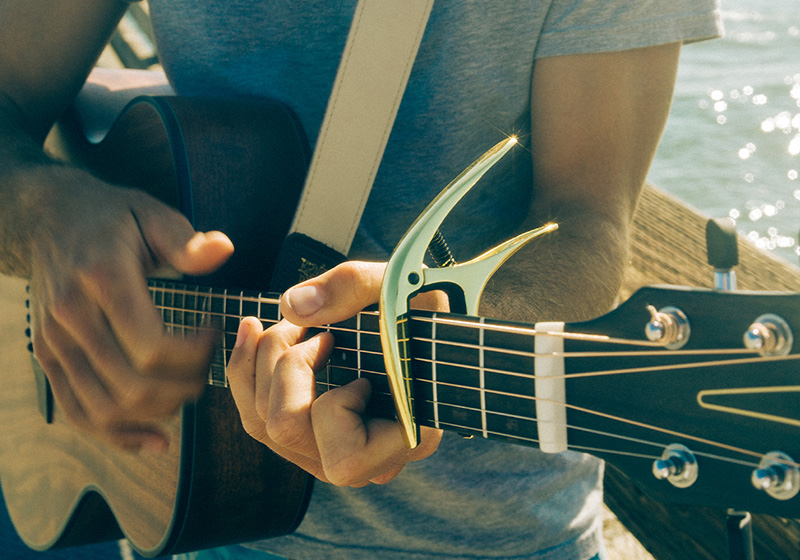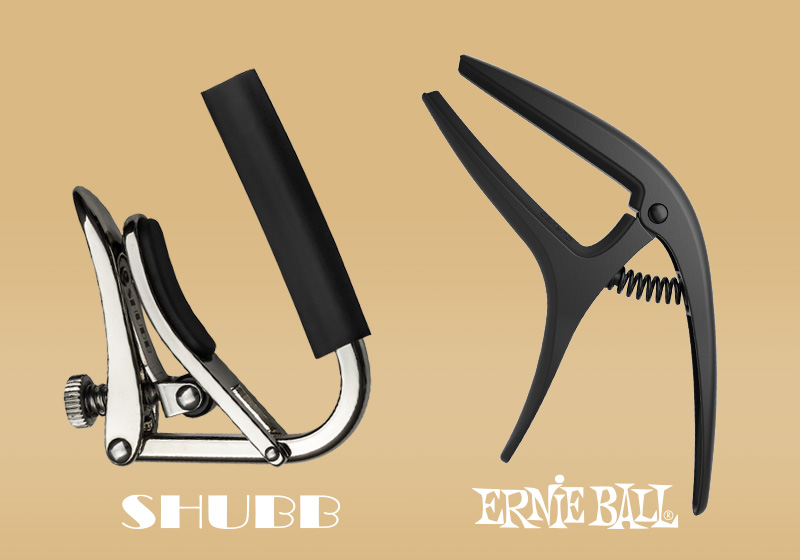The capo
The capo is a device to reduce the vibrating length of the guitar string, much like your fingers naturally do. In the mid to late 19th century, the first capo was developed. Initially, it was just a metal ring, which was stretched by means of rubber, around the neck of the guitar. The still playable area is the length of the strings, which is measured between the fret of the depressed strings and the bridge. The capo (short form: capo) is used to shorten the strings of the guitar, so that you can play in higher pitches without having to change the fingering. Often, a capo is used to adjust the pitch of the guitar to better suit the range of the singer
Capo for barré fingerings
The capo replaces the index finger when fingering chords. This makes it easier to fret barré fingerings. This is especially helpful for beginners who’ve yet to master the strength needed for some fingerings, and for experienced players who simply don’t have the dexterity necessary for certain chords. This includes children and those with smaller hands. Some pieces of music are composed in such a way that they cannot be played without a capo, meaning that many professionals also utilize the device.
With the capo, complicated pieces of music can be played at a higher pitch without having to change your original fingering pattern. Chords and fingering sequences can thus be transposed with the same fretting pattern to other parts of the fretboard. This allows the user to adjust pitch without learning a whole new composition.
A player clamps the capo between the fret bars and around the neck of the guitar. The strings are pressed onto the fretboard as though the cape was a finger. Playing with a capo is a staple among Flamenco players, however, you’ll find capos in country, jazz, pop, and rock music as well.
Placing a capo is delicate work, and could take some practice to keep strings from buzzing or muting. It is recommended that, after attaching the capo, the user checks the guitar’s tuning and string placement.


There are also capos that press down only certain strings. These so-called "partial capos” allow the user to decide which strings should be depressed at what frets. This type of capo is called a "third-hand capo". Before buying a capo, you should pay attention to the fretboard profile of your guitar has and what width is required. On a classical guitar, for example, the capo needs to be wider than for an acoustic guitar. Ask your music dealer for recommendations.